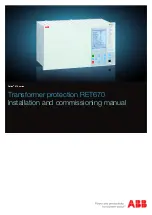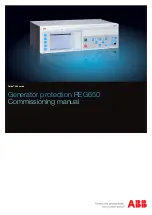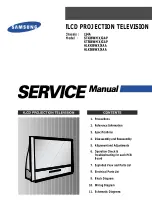
001-01-000055 Rev. 000
Page 4 of 7
SIPP-600C Cable Cover
Model SIPP-600C includes a cable cover (Figure 8) that
needs to be removed in order to install or remove
modules. The cable cover prevents tampering with front-
side connections to network equipment after the modules
and cables are installed. The cover is fastened to the
chassis with two (2) spring-loaded Phillips screws.
Figure 8. SIPP-600C with cable cover
SPM Installation
NOTE:
Primary protectors shall be installed in
accordance with the applicable requirements of National
Electric Code ANSI/NFPA-70, Article 800 Section 800.50.
Service Protection Modules can be placed in any order or
combination in available positions of the SIPP-600
chassis. Each SPM occupies one or two positions,
depending on its function.
To install a module, insert it into the front of the chassis
and slide it back slowly through the card guides. After fully
seating the module, tighten the screw on the front of the
unit to ensure proper grounding of its front panel to the
chassis frame.
SPM Network Connections
For SPM-XX-R modules, connect network equipment to
the jack(s) on the rear of the module.
NOTE:
Installations with limited rear access may require
cables to be fed through the chassis, from back to front,
and attached to the module before inserting it into the
mounting.
Be sure to provide adequate cable slack.
For SPM-XX-F modules, connect network equipment to
the EQPT jack(s) on the front of the module.
SPM Line Connections
Connect the exposed facility to the LINE jack(s) on the
front of the module.
MODULE CONNECTOR
CONNECT TO
Front (EQPT) or rear
Network equipment (protected)
Front (LINE)
Exposed facility (unprotected)
SPM Removal
To remove a protection module, first disconnect cables
from the unit. If access is limited, rear cables can be
disconnected after the module is removed from the
mounting. Loosen the screw on the module’s front panel
and slowly slide the unit forward out of the chassis, being
careful to guide any cables connected to the rear.
MIP-4 Couplers
The MIP-4 module accepts snap-in Keystone style
couplers for fiber, coaxial, or twisted pair terminations that
do not require protection.
NOTE:
Couplers are installed or removed from the rear
of the MIP-4 with the module removed from the chassis.
Each coupler is held in place by angled tabs along the top
and bottom of the coupler body. To install a coupler, tilt it
back slightly while inserting it though the rectangular
opening, until the lower tab clears the front of the panel.
Then apply pressure to the upper tab and tilt the coupler
body forward until it snaps in place.
To remove a coupler from the MIP-4, apply pressure to
the upper tab while tilting the coupler body backward.
After the upper tab is freed, the coupler can be lifted and
removed from the opening.
MIP-4 Installation/Connection
The MIP-4 module occupies four slots in the SIPP-600
chassis.
Before installing the MIP-4 module, feed network cables
through the chassis, from back to front, and connect them
to the rear of the couplers. Then insert the MIP-4 through
the front the chassis and slide it back slowly through the
card guides. After fully seating the module, tighten the
WARNING
When removing a module or its LINE connection:
Visually inspect the cable and equipment for damage or
exposed conductors BEFORE making contact.
Use appropriate detection equipment to ensure that no
hazardous voltages or currents are present.
Follow local guidelines for safety.
IMPORTANT: The
module’s
front panel screw must be
tightened securely to ensure
proper grounding.
Recommended screw torque
is four (4) inch-pounds.

























